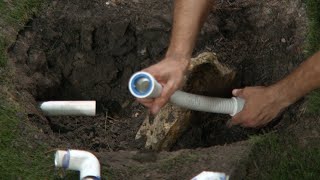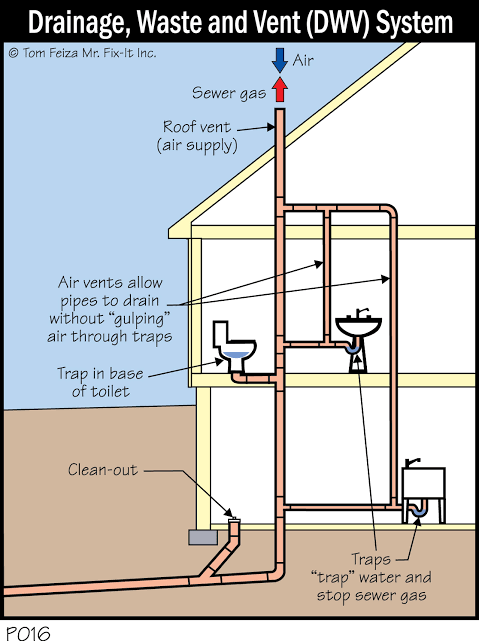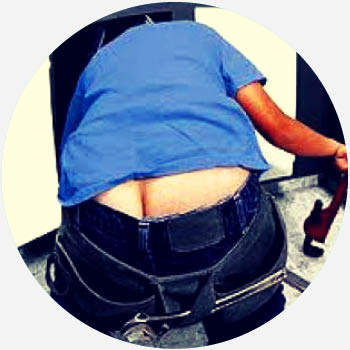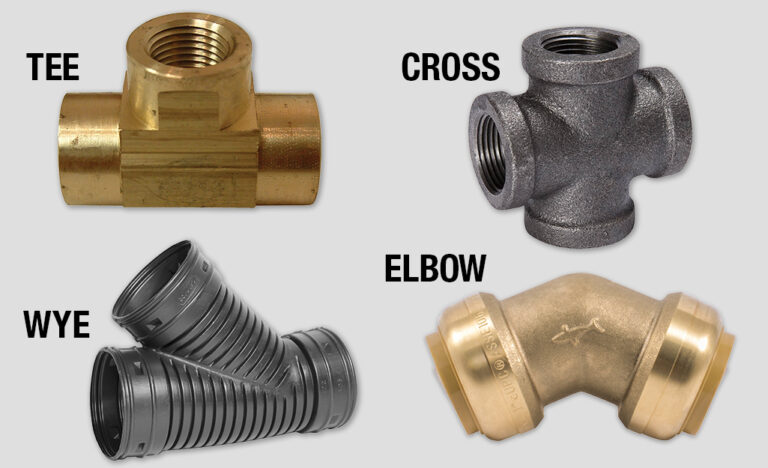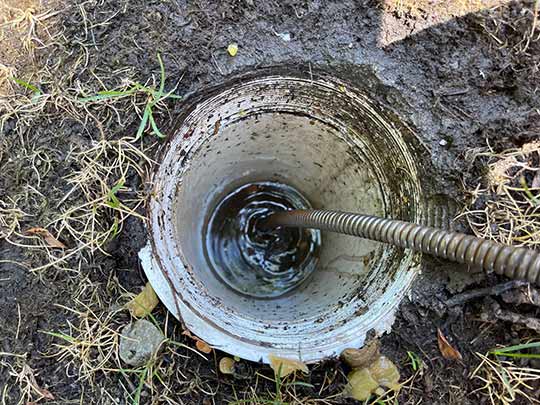How Do You Fix Flexible PVC Pipe?
Flexible PVC pipe is a versatile and affordable type of pipe used in a variety of plumbing applications. It is easy to install and can be used for both hot and cold water supply lines. Flexible PVC pipe is also resistant to corrosion and is an excellent choice for underground piping. However, it can be prone to damage due to its flexibility and can require repairs from time to time. Fortunately, fixing a flexible PVC pipe is relatively simple and can be done with a few basic tools. With the right supplies and a bit of know-how, you can repair your flexible PVC pipe in no time.
What Is Flexible PVC Pipe?
Flexible PVC pipe is a type of durable, lightweight piping that is typically used for plumbing applications. It is made from polyvinyl chloride (PVC) and is resistant to corrosion, temperature extremes, and chemicals, making it a popular choice for residential, commercial, and industrial projects. This type of pipe is available in a variety of sizes and lengths, making it a versatile material that can be used for a variety of applications. But how do you fix flexible PVC pipe when it starts to wear out or break? This article will discuss how to fix flexible PVC pipe, from simple repairs to more complex methods. It will also provide tips on how to prevent damage to your flexible PVC pipe in the future.
Identifying the Problem
Identifying the problem in a flexible PVC pipe is the first step in fixing it. It is important to distinguish between a leak caused by a cracked pipe and one caused by a loose fitting. A cracked pipe may require a complete replacement while a loose fitting can be corrected with a few simple steps. In some cases, it may be helpful to use a dye test to determine the extent of the issue. To do this, you’ll need to mix a dye solution and add it to the pipe. If the dye appears in the area of your suspected leak, it confirms that it is the source of the problem. Once you have identified the problem, you can select the appropriate solution.
Preparing for the Repair
When it comes to repairing flexible PVC pipe, proper preparation is key. Before starting the repair process, you’ll need to gather some basic supplies and tools, such as a hacksaw, PVC cleaner, and PVC cement. Additionally, it’s important to measure the pipe accurately and cut it carefully to ensure a tight, secure fit.
Once you have the necessary supplies and tools on hand, you can move on to the actual repair process. To start, you’ll need to identify the leak and determine the right size of PVC pipe you’ll need. If the pipe is too large, it won’t fit properly, and if it’s too small, it won’t seal correctly.
Next, you’ll need to prepare the pipe for the repair. This means cleaning it with the PVC cleaner and sanding it down to create a smooth surface for the sealant to adhere to. Once the pipe is prepped, you can cut it to size and fit it into the joint. Then, you’ll need to apply the sealant to the joint and let it dry before reconnecting the pipe.
With the right supplies and tools, fixing flexible PVC pipe is a relatively straightforward process. However, it’s important to take the necessary precautions to ensure the repair is both effective and safe. By following the steps outlined above, you can get your pipe back in working condition quickly and efficiently.
Steps for Repairing Flexible PVC Pipe
PVC pipes are extremely useful for a variety of plumbing tasks. However, they can become damaged over time, and need to be repaired. If you need to repair flexible PVC pipe, there are some steps you can take to ensure that the job is done correctly.
First, make sure you have the right tools for the job. You will need a PVC cutter, some PVC cement, a PVC primer, and a piece of flexible PVC pipe. Also, make sure you have a work surface that is clean and free of debris.
Next, measure the length of the flexible PVC pipe that needs to be repaired. Cut the pipe to the correct size using the PVC cutter. Clean the end of the pipe with a rag, and then apply the primer to the pipe. After the primer has dried, apply the PVC cement to both the inside and outside of the pipe.
Now, insert the end of the pipe into the pipe fitting. Make sure that the pipe is inserted firmly and securely into the fitting. Once the pipe is in place, apply some more PVC cement around the joint. Allow the cement to dry before turning on the water.
Finally, check for any leaks in the flexible PVC pipe. Turn on the water and inspect the pipe for any signs of leaking. If you find any leaks, apply some more PVC cement to the area and let it dry.
These steps should help you fix a flexible PVC pipe quickly and easily. Make sure you have the right tools, measure the pipe, clean the pipe, and apply primer and cement. Finally, check for any leaks and apply more cement if necessary. With these simple steps, you should be able to repair your PVC pipe in no time.
Cautions for Repairing Flexible PVC Pipe
When it comes to plumbing repairs, it is important to know how to fix flexible PVC pipe correctly. If repairs are not made properly, it can lead to further damage or even water damage and expensive repairs. Flexible PVC pipes are often used in plumbing systems, and they can be a great solution for many problems. However, they need to be handled with caution and repaired correctly.
To start, it is important to ensure that you have the right tools for the job. Flexible PVC pipes are very thin and require special tools such as a hacksaw or PVC cutters. It is also important to use a good quality adhesive when repairing the pipe. The adhesive should be specifically designed for use with flexible PVC pipes and should be applied carefully.
It is also important to be aware of the type of flexible PVC pipe you are dealing with. Some types of pipes are more prone to damage than others, and it is important to use special tools and techniques for each type. Additionally, it is important to ensure that the pipe is properly supported and connected to the rest of the system. Any loose connections can lead to leakage and further damage.
Finally, when repairing flexible PVC pipes it is important to take proper safety precautions. Wear protective gear such as gloves and goggles, and make sure that any other sharp objects in the area are moved away from the pipe. Additionally, it is important to follow the directions of the adhesive manufacturer closely and to allow the adhesive to cure for the recommended amount of time before using the pipe again.
By following these tips, you can ensure that your flexible PVC pipes are repaired correctly and safely. It is important to take the time to do the job right, as incorrect repairs can lead to more serious damage and costly repairs.
Troubleshooting Common Flexible PVC Pipe Issues
Flexible PVC Pipe is a popular material choice for a range of plumbing applications due to its durability and ease of installation. However, it can also be prone to damage or malfunction over time, and it is essential that any issues with flexible PVC pipe be addressed immediately to avoid further damage and costly repairs. To help you tackle any problems that arise with your flexible PVC pipe, this article will provide an overview of common issues and how to fix them.
The most common issue associated with flexible PVC pipe is cracking or splitting. This can occur due to exposure to extreme temperatures or exposure to harsh chemicals, or it can be the result of improper installation. If there’s a crack in the pipe, the best option is to replace it with a new one. If the split is small, however, it may be possible to repair it using an epoxy or silicone-based sealant.
Another common issue with flexible PVC pipe is clogs. Clogs can occur due to a buildup of sediment or debris, or they can be caused by corrosion or blockages in the pipe. To clear a clog, it’s best to use a plumbing snake or specialized plumbing auger. If the clog is particularly stubborn, it may be necessary to use stronger chemical solutions such as drain cleaners or clog removers.
Finally, flexible PVC pipe can sometimes become disconnected or loose due to improper installation or shifting in the ground. To repair a loose connection, it’s best to use a fitting or coupling to secure the pipe and ensure a tight seal. If the pipe is completely disconnected, it may be necessary to replace the entire section of pipe.
Troubleshooting flexible PVC pipe issues can be a daunting task, but with the right knowledge and tools, it’s possible to address many common issues without having to call in a professional. If you’re experiencing any issues with your flexible PVC pipe, be sure to take the necessary precautions and address the issue as soon as possible.
FAQs About the How Do You Fix Flexible PVC Pipe?
1. What tools are needed to fix flexible PVC pipe?
A: To fix flexible PVC pipe, you will need a hacksaw, a PVC primer, a PVC cement, a file, a knife, and a clamp.
2. How do I know if the flexible PVC pipe requires a repair?
A: You can inspect the pipe for cracks, holes, or any other signs of damage. If you notice any of these issues, then you will need to repair the pipe.
3. Is it difficult to fix flexible PVC pipe?
A: No, it is not difficult to fix flexible PVC pipe. With the right tools and a bit of patience, you can easily fix the pipe.
Conclusion
To fix flexible PVC pipe, you need to cut away the damaged section and then use a coupling to join the two ends together. You will also need to apply primer to the cut ends, as well as glue, to ensure a secure and watertight connection. With the right supplies and a bit of patience, you should be able to repair your PVC pipe with ease.

